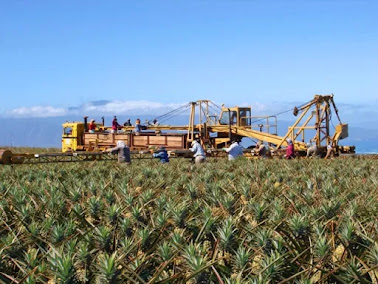Most of the production equipments for biochar are currently obsolete, so that the productivity and quality of the products produced are low, also causing environmental problems, namely air pollution. In equipment with this technology, the production process is also not running efficiently, indicated by the large amount of energy or heat loss so that it is less profitable. Slow pyrolysis technology is the best technology for biochar production because it maximizes the production of a solid fraction (biochar). Meanwhile, other thermal technology group are not so suitable for biochar production, for example fast pyrolysis, the main objective of which is to maximize its liquid product or biooil, gasification is the main objective of maximizing gas or syngas product as well as hydrothermal carbonization (HTC) or wet pyrolysis requiring high pressure operating conditions so that it is difficult to be applied. Modern slow pyrolysis technology will operate autothermal / self sustain fuel, safe, good process control and energy management, so that in this way in addition to energy being used for the pyrolysis process itself, excess energy can also be used for other needs such as electricity or heat production.

And indeed, basically the quality and quantity of biochar is determined by the raw materials used and the conditions of the production process, especially the pyrolysis. In fact, to ensure the quality of biochar, all aspects need to be considered such as raw materials and production processes such as the pyrolysis operating temperature should not be more than 20%, interruptions when production are allowed as long as the conditions of subsequent production parameters are maintained the same as before the restart. The composition of the raw material should not fluctuate more than 15%. And for modern pyrolysis equipment, the excess energy must be utilized with an estimated 35-60% of the energy from the biomass raw material found in pyrolysis gas. A number of agricultural waste processings can use the pyrolysis optimally, including:

1. Palm Oil Industry
The use of pyrolysis technology for palm oil companies, especially in Indonesia, is currently ideal. This is because palm oil mills or CPO mills produce a lot of solid waste biomass namely, empty fruit bunches/EFB, fiber and palm kernel shell. And because palm kernel shell / PKS has a lot of demand both from within and outside the country for industrial fuel and power plants, this PKS should not be used as raw material for pyrolysis or biochar production, but can be directly used as a trading commodity. The EFB and fiber are used as raw material for biochar and then the biochar is used to improve the soil quality of palm oil plantation so that fresh fruit bunch or FFB productivity increases. Excess energy from pyrolysis is then used as boiler fuel so that it can reduce or even replace all PKS as the the boiler fuel. And because the boiler fuel is replaced with the excess energy pyrolysis, so can be all of the PKS can be sold.
2. Integrated Coconut Industry
Products from coconut processing such as copra, dessicated coconut, and nata de coco require heat in the production process. Coconut shell charcoal is also a favorite charcoal with a large market demand. The charcoal will usually be further processed into briquettes for energy and activated carbon for various industries. For biochar production, coconut industrial wastes such as coir/fiber, bunch and midrib can be used. Excess energy of pyrolysis can be used for the production of the above products and other advanced products. The low productivity of Indonesian coconut production needs to be improved, one of which is by improving soil quality with biochar. In addition, there are so many coconut plantations in Indonesia that need to be replanted so that improving soil quality to achieve the desired production is increasingly important.
3. Corn Plantation
Efforts to increase food products need to be taken seriously, this can be done in two ways, first by expanding the land or making new rice paddy fields for production and the second by improving the quality of existing land so that productivity will increase. Biochar is very effective and efficient for the second method above. Besides being used as a human food source, corn is also used for animal feed. With the projection of the human population continuing to increase, the need for food either directly by consuming corn or indirectly from livestock such as meat and eggs. Poultry or chicken feed production ranks first of other animal feed production, or in the world almost half of the animal feed produced is chicken feed. Corn cobs and husks are agricultural waste that can be used for biochar production. Excess energy from the pyrolysis process can be used for drying corn and other advanced processes.
4. Rice Paddy Farming
Rice or paddy is the staple food of most of the Indonesian population. The area of irrigated rice fields is decreasing throughout the year. This encourages the use of non-irrigated rice fields or dry land for the production of this rice. Biochar is able to improve the quality of dry land soils, such as in corn farming. Rice husks are rice paddy agricultural waste that can be used for biochar production. Excess energy from rice husk pyrolysis can be used for drying the rice paddy itself so that it becomes dry grain ready to be milled, or for other purposes. With the improvement of soil quality, rice productivity can be increased and it is not impossible that food self-sufficiency, especially rice, can be achieved, as has been achieved by Indonesia some time ago.































